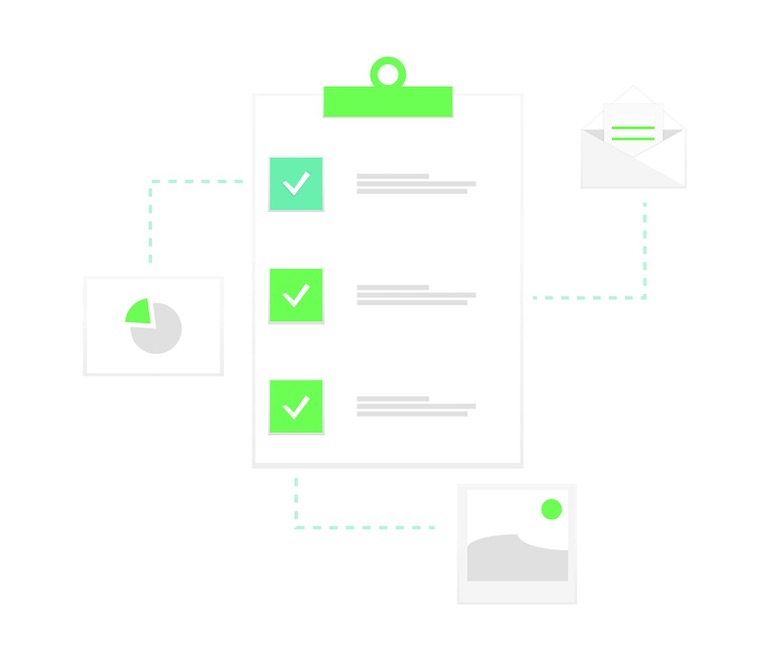User feedback helps ensure that the store or site you’ve designed meets the needs of your user. User Experience (UX) is one of the most critical aspects of success for a company. Without a streamlined UX, your clients will experience the Four Horsemen of online commerce: a high churn rate, user frustration, one-star reviews, or even negative public opinion.
Oftentimes, this is simply a result of a lack of optimization: things that seem obvious to developers or creators may be entirely obscured to users. This is why user feedback is so critical to gather when planning out your development roadmap. Without knowing how your users experience your site/platform, how can you begin to solve the most relevant issues?
Too few companies seek this information out and rather inadvertently take a reactive stance to the inevitable negative reviews that appear online, or only try to collect these opinions from clients who churn, far too late in the game.
It’s obvious, then, that a proactive approach to UX is the smartest option. By collecting feedback and seeking out user opinions (perhaps with a discount as a reward), you’re guaranteeing that you're aligned with your audience’s needs and concerns. To successfully grow your business and give your clients a competitive edge, your ultimate resource are your users.
Remember, the customer is always right.
In this article, we’ll walk through three key strategies for efficiently collecting quality user feedback to create a proper roadmap of improvement.
1. Collect user feedback via live chat

Live chat is one of the best ways to interact with and engage users while they’re on your website. Live chat allows customer support to resolve a variety of user issues before they escalate into a negative review or heated email to your support team.
These chats are an opportunity for your client to better understand their user's needs, and for the user to feel heard by the company. Plus, the feedback gathered during the chat is immensely valuable—it can help uncover trends and eliminate recurring pain points in the user experience.
You can help your clients collect this feedback by using live chat strategically, especially as resources for a 24/7 support platform are likely limited.
Examples of efficient use could be:
- Have a live chat modal appear after a certain threshold is reached, such as time on page, navigation to specific URLs (such as contact or support), or clicking through multiple support documents.
- Use chatbots to automate and initiate chat flows, directing them to a live person if their issue isn’t easily solvable.
Lastly, be sure to create a feedback form for users after the live chat session has been closed. This helps collect valuable information on how customer support operations are functioning, and will highlight areas for improvement.
You might also like: How to Learn More About Your Users with a Contextual Inquiry.
2. Collect user feedback via survey popups
Surveys are the tried and true method for collecting user feedback and can be formatted to suit a variety of needs. The ultimate goal of a survey is to collect an unbiased selection of user feedback in an efficient, scalable manner.
Surveys often offer users an anonymous feedback option, which translates to a more honest opinion. Format your survey based on what type of information you’re looking for: long-form answers, multiple-choice, checkboxes, NPS scores, and so on. Display the survey via onsite popups to encourage visitors to fill them out while browsing through your website (or at least do so before they exit). Trouble getting survey conversions? Add in a small discount in exchange for entering feedback.
Targeting rules and audience segments can also help you narrow into your audience, depending on your survey’s focus. This is especially useful, as it can highlight when similar groups of people are facing the same issues.
Based on a visitor’s survey responses, you can enroll them in different automated email flows to continue the engagement. When users share positive feedback, send them an email encouraging them to leave a review in exchange for a discount or reward points. If they share negative feedback, seize the opportunity by reaching out to them personally to discuss the issues further. Conversions from users with negative experiences can become some of your most loyal customers.
You might also like: Research 101: How to Conduct Market Research for Your App.
3. Rescue the unsubscribe

All marketing emails should contain the option to unsubscribe from a mailing list somewhere in their layout (and it shouldn’t be difficult to find, as that will just annoy users further). But, just because someone has clicked to unsubscribe, it doesn’t mean all is lost! You can still help your client rescue the relationship.
Once a user lands on your client’s unsubscribe page, you should have several alternatives to full unsubscribes available. Consider a frequency option: allow users to choose to only receive emails at certain times such as once a month, when a new product launches, or when there are service updates.
Sending frequent emails to your users doesn’t necessarily equate to better relationships. Sometimes your most loyal and engaged users only want to hear from you once a quarter or for a major product launch. Perhaps certain user segments only want to hear from you for a weekly round up or for information about their account. Providing options for those users will help further nurture that relationship.
Despite you and your client’s best efforts, unsubscribes are a simple fact of life for online businesses. But that doesn’t mean you can’t learn from them. Understanding your users’ email expectations and preferences is the key to creating satisfied, engaged users.
Collecting this type of information offers the potential to reveal behavioral trends and an opportunity to create new segments. A larger pattern may emerge among users that leads you to create new or improved communication strategies that lead to more engaged relationships.
Eliminating user annoyances in their tracks
As we’ve seen, user feedback is one of the most important elements of any development roadmap. Without knowing how people are using and responding to your website, you’ll be taking shots in the dark hoping things get better.
The strategies listed in this article are, while not exhaustive, the most common and effective methods that we recommend you try. With all things digital marketing, there’s always ample room for creativity—run A/B tests for different feedback forms or combine locked email discount offers with a survey. These experiments will help you better understand your users, and help your client on their path to conversion.
What user feedback methods have you tried? Share your thoughts below.








